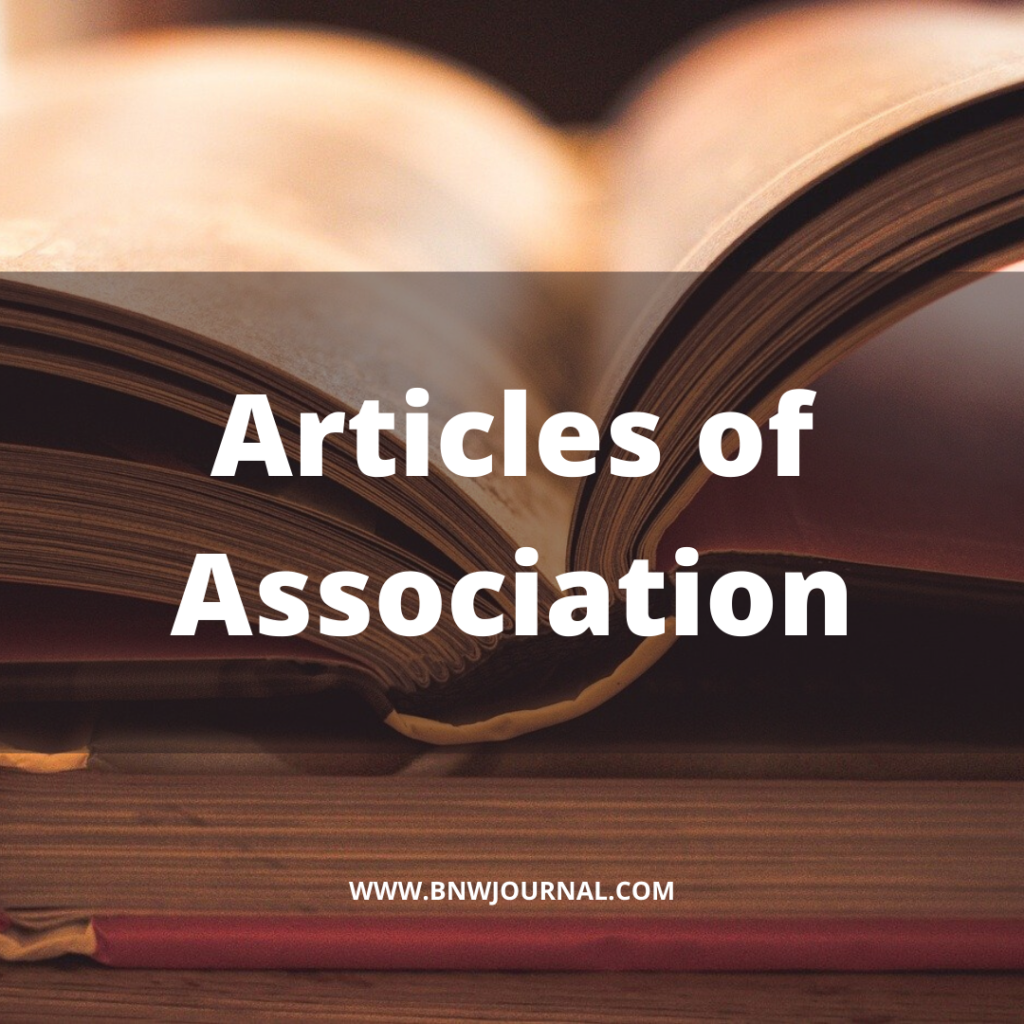![]()
Introduction
The person goes through a lengthy process for floatation of a company before eventually giving birth to a body corporate; i.e. a legal person. The birth of the legal person like the birth of an actual person requires registration with a registration certificate. A company is an association of several persons for some common object or objects purely for economic reasons, which is for profit or gain.

The Article of Association of a company is like an internal regulation that governs the internal administration of a company. It functions as a rulebook or byelaws. It is to say how the aims mention in the Memorandum of Association will be achieved. This establish that articles of association constitute a contract between the company and the members. In so far as they confer rights or duties on the members amongst members; but not in so far as they confer rights or obligations on members in some other capacity. For example qua directors.[1]
The intricate question that arises is; to what extent contractual rights against a company are immune from interference by changes in the articles of association.[2] However, it is understandable through stating that the articles are a contract not with outsiders. It is merely with the members in respect of their rights as members.[3] So the change remains within the people subscribing to it and no other outsider.
Relationship of Memorandum of Association and Articles of Association of a Company
The articles of association determines how the power a company confers via the memorandum of association is exercisable. The English court in Ashbury Railway Carriage & Iron Co Ltd v. Riche[4] held that the memorandum is at it was, the area beyond when the actors of the company cannot go; inside that area the shareholders may make such regulations for their government as they think fit. This remains the authority on the same. Further, In Ashbury v. Watson[5] it was held that the articles are subordinate to the memorandum in the sense that they cannot confer wider powers than the memorandum and any altercation to the articles which conflicts with the memorandum is void to the extent of the conflict. The articles cannot result in, to fill in the gap in the memorandum. Specifically in respect of any matter which via law is necessary to be in the memorandum.
Indian laws
Under the Indian Companies Act, 2013 requires Articles of Association as a necessary document of a company. In India, all types of companies public or private; limited by shares or limited by guarantee; or an unlimited liability company must compulsorily register articles of association. It is sort of a prerequisite of the creation of a company.
Section 2(5) of the Act defines what articles are in the Indian context. Additionally, they must follow the regulations provided under the Table A in Schedule I of the Act. According to Section 7(1), at the time of incorporation of a company articles of the company duly signed by all the subscribers to the memorandum in the prescribed manner.
Several tables are attach to the act as provided in Section 5(6). The company must prescribe to it in accordance with their own type. Section 5 in-depth deals with the articles of associations. These norms need to be follow and must prescribe by all incorporating companies. Further, it is important to have a printed copy of articles that must be numbered and duly divided into paragraphs. Most importantly it must contain the official seal of the company along with the signatures of the subscribers.
Most important is the content of the articles. As already established, the articles must not contain anything illegal or ultra vires the memorandum. Needless to say it must not be in contravention of the provisions of the Companies Act, 2013.
The contents may describe the share capital, the terms related to call of shares, transfer of shares, forfeiture of shares, the provisions related to general meetings, dividends, guidelines for directors, process of accounts and audits, borrowing power, winding-up procedure, etc.
Alteration of Articles of Association
The articles can be altered in accordance with section 14 of the Act. It is a statutory right of a company to alter its articles of association. However, as earlier cannot go beyond Memorandum. Additionally, by altering its articles shift of a private company into a public company; or a public company into a private company is also possible.
Every alteration of the articles needs an approval of the Tribunal as per section 14(1). Also same shall be filed with the Registrar, together with a printed copy of the altered articles. This have to be done within fifteen days in such manner as may be prescribed, who shall register the same.
References:
[1] L. C. B. G. “The Contractual Effect of Articles of Association.” The Modern Law Review, vol. 21, no. 4, 1958, pp. 401–404.
[2] Kahn-Freund, O. “Articles of Association and Contractual Rights.” The Modern Law Review, vol. 4, no. 2, 1940, pp. 145–148.
[3] Agbonika, J.; Olong, M.; Agbonika, J. (2014). The Legal Effects of Articles of Association of Company: Perspectives on Corporate Governance in Nigeria. Journal of Law, Policy and Globalization, 28, 124-[i].
[4] Ashbury Railway Carriage & Iron Co Ltd v. Riche(1875CR,7HL653)
[5] Ashbury v. Watson, (1885) 30 Ch. D 376 (CA)



1 Comment
Anurag Srivastava · 03/05/2020 at 12:40 PM
Very precise and concise!